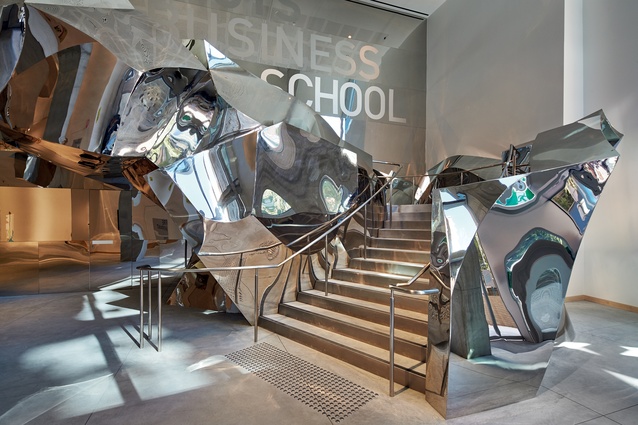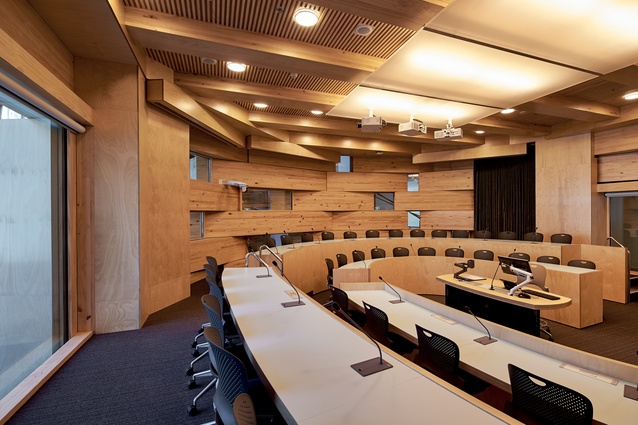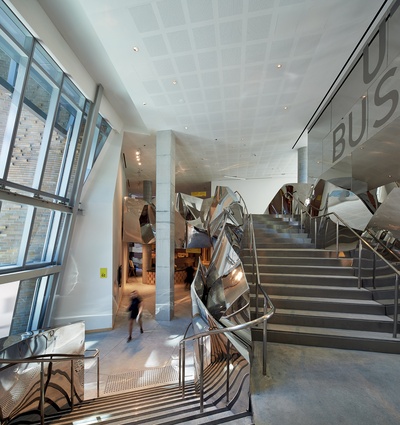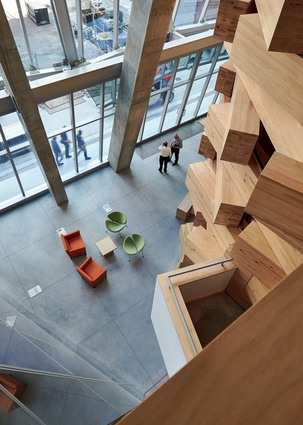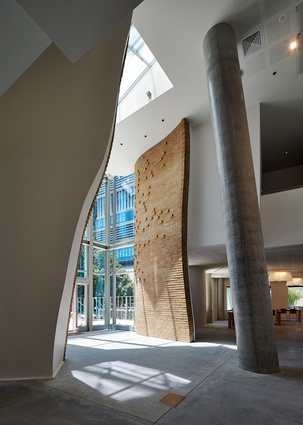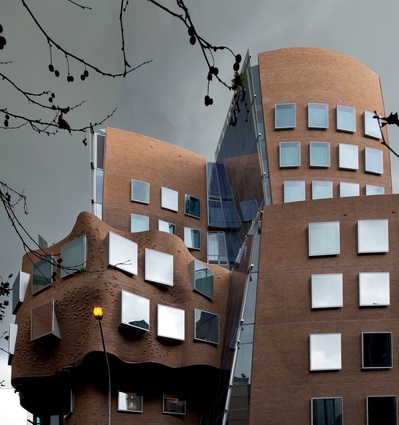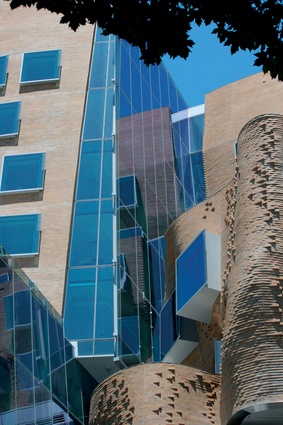Inside Gehry
It’s hard not to envy students and staff at the University of Technology, Sydney (UTS). Year by year, their everyday educational spaces are being transformed by a billion-dollar furnishing of new landmarks within the UTS City Campus – with the well-staged arrival of a building by Frank Gehry, on time and on budget, as an added ‘X factor’.
Judging a Gehry-designed building from the outside alone is, as it happens, a mistake.
The latest proof of that is the building that Gehry Partners has delivered with local firm Daryl Jackson Robin Dyke Architects for the 1, 600-plus people who gravitate around the UTS Business School, which opened officially just last month.
There is no mistaking a signature exploitation of materials on the exterior: a shape-shifting façade of masonry on the public-facing side and a collision of glazing on the other.
At the same time, being consciously woven into the exterior/interior of its inner-city urban context as it is, the 14-levelled Dr Chau Chak Wing Building – named for a donor – has a refreshingly understated relationship to the car-driven thoroughfare next to which it is nestled on Ultimo Road.
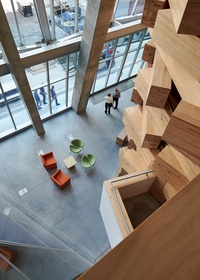
The full revelation of the exterior – dubbed by some as resembling a crumpled paper bag – is best experienced on foot, courtesy of the makeover of a disused rail corridor known as the Goods Line into a stylish pedestrian and cycle-friendly linear park that segues with and reinforces Gehry’s original conception of the 14-levelled Business School as a treehouse.
On the stated premise that the $180-million, 18,000m2 building was designed from the inside out, the teaching and learning spaces within are its unseen beating heart. For Professor Shirley Alexander, deputy vice-chancellor of Education and Students, and project manager Brian Moore alike, the building’s two oval classrooms, constructed in Jenga-like fashion of large, laminated timber beams, are a standout feature of the interior.
Alexander: “Shifting formal education to smaller spaces flips the teaching and learning around. Aspects like the oval design have an element, too, of emulating a community of scholarship, into which people can come and go.
“The flexible interior of this building facilitates what we call a high-touch learning experience. The oval classrooms, each of which seats up to 54 students, exemplify that.
“As I’ve experienced myself from a session in one of the classrooms, there’s no hiding in the corner because there are no corners… for a teacher everyone is literally within reach and students aren’t hiding up the back or on Facebook. Everyone is pushed out of their comfort zone a little bit but the feedback being generated already is really positive.”
Moore: “Putting the lecturer or presenter in the middle of the space with students at 360 degrees around them, makes for teaching ‘in the round’, and a fabulous opportunity for learning that’s creative and, through technology (like a new era of videoconferencing), globally connected.”
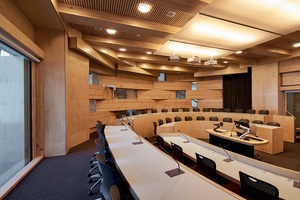
Are the floor plans predictably laid out or conventionally linear? Has the building sacrificed anything when it comes to deploying state-of-the-art technology? No, and most definitely no, considering the use of interactive whiteboards and ‘smart’ lecterns with touch-screen computers, plus multi-screen, high-definition projection and student-accessible microphones.
Shirley Alexander again: “What this interior enables is the best of online learning and the best of face to face, formal and informal. Our campus-wide learning strategy reflects an enormous amount of time spent looking at ways to integrate our education practice with the future of work and society, and it underpins the design.
“This is a building where people will run into each other constantly – what some people might call ‘bump spaces’ – but with enough nooks and crannies to present a variety of options.
“It all contributes to attributes like highly engaged communication skills and develops graduates who know about design thinking and who are better equipped to work interactively and collaboratively together.”
Alexander is buoyed by enthusiastic support from business and industry for the changes being made to teaching and learning at UTS.
She’s confident that buildings with the mix of soft spaces, technology and sustainability offered by the building – not to mention its internal, sculptural qualities and generous natural lighting – will be “much more ubiquitous” in the future.

